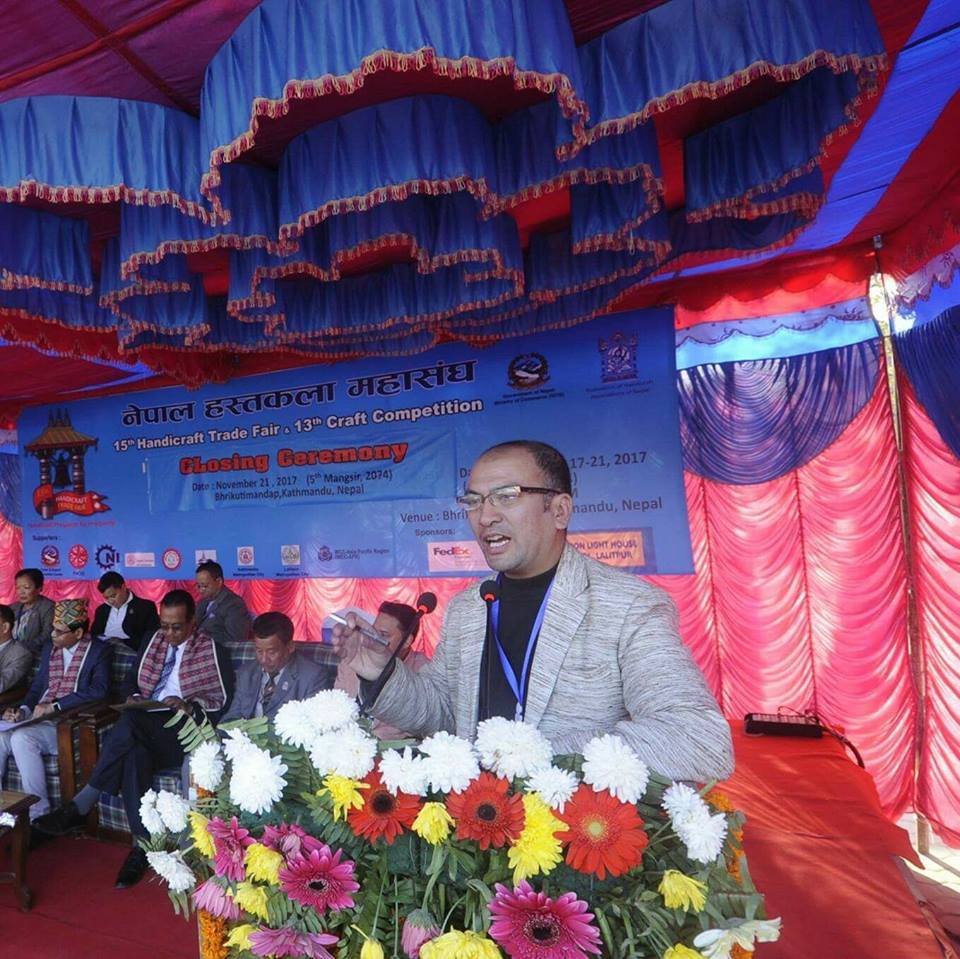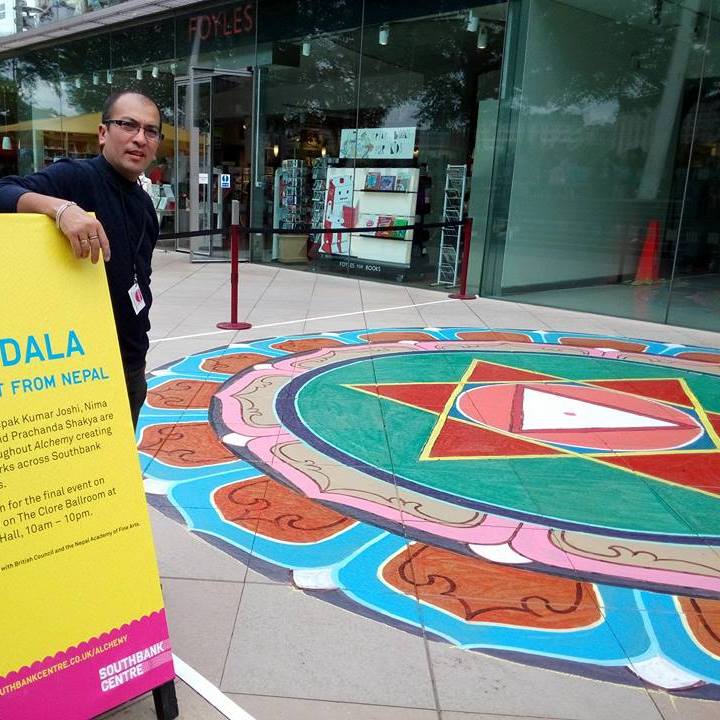Whether it’s the breathtaking color combo of sacred Thanka or the mellow texture of soft Pashmina, traditional handicrafts have always been dearest in every nooks and corner of the country. The perfect blend among the craftsman’s imagination, the cultural essence, and the religious reflection soothes the mood and soul of every wanderer. So it’s obvious why these handicrafts grab the attention of every local, national and international traveler passing by the showrooms of Durbar Squares’ alleys. But with the modernized time, the lure of domestic handicraft industry is getting limited as a small track in the promotion of tourism. Due to lack of concern from today’s generation, the industry is unable to stand in it’s best triumph.
Prachanda Shakya is the Founder and Director of Nepal Traditional Handicraft Training Center who is also serving as the Vice-President of Federation of Handicraft Association of Nepal. Felicitated as the artist of the year ‘Ashok Smriti Kosh 2003’, Mr. Shakya has been contributing in this industry for a long time. Glocal Khabar had an inclusive interview with him to know about the scope of Traditional Handicrafts in Nepal. Some of the glimpses from the interview are presented below:
Glocal Khabar: How comprehensive is the Traditional Handicrafts to acknowledge?
Mr. Shakya: When we talk about Nepalese handicrafts in general, most of us think about Thanka painting and Maithili Chitrakala. However, the concept is vast. In traditional art, there are 5-6 genres but as a whole, we have a total of 42 genres in Handicrafts that include glass blowing, basketry, pottery, Pashmina, and Galaicha making. So, if I have to sum up, Traditional Handicrafts are any form of arts made by hands that carry religious importance and reflect the lifestyles.
Glocal Khabar: How have the institutions here in Nepal been training the youths in this field? What are the participation rate and familial support?
 Mr. Shakya: Though handicrafts are handmade making it different from person to person, it requires the skills, techniques and religious awareness when we talk about ‘Traditional’ handicrafts in specific. These handicrafts carry the cultural beliefs and morality because of which the craftsmen and artists should be very careful about. There are few small institutions providing basic training in the Durbar Squares of Kathmandu, Bhaktapur, and Patan, but Nepal Traditional Handicraft Training Center is basically the only one to provide intense training on a different section such as sculpture making, Thanka and Pauwa painting in a single board. Lalitkala Campus has also been providing the fine arts. The study of Handicrafts is also cheaper compared to any other subjects. The extra cost might be added as per the personal preference of tools and materials.
Mr. Shakya: Though handicrafts are handmade making it different from person to person, it requires the skills, techniques and religious awareness when we talk about ‘Traditional’ handicrafts in specific. These handicrafts carry the cultural beliefs and morality because of which the craftsmen and artists should be very careful about. There are few small institutions providing basic training in the Durbar Squares of Kathmandu, Bhaktapur, and Patan, but Nepal Traditional Handicraft Training Center is basically the only one to provide intense training on a different section such as sculpture making, Thanka and Pauwa painting in a single board. Lalitkala Campus has also been providing the fine arts. The study of Handicrafts is also cheaper compared to any other subjects. The extra cost might be added as per the personal preference of tools and materials.
However, I think the institutions are too less in the number compared to what is needed. There has been a remarkable progress in the participation of youths especially the students after SLC/SEE getting involved in these training. Most of them are referred to by their parents to build a skill rather than wasting the spare time. It’s so inspiring when different Professors and Scholars join the classes in their late 50s and 60s to groom their creativity. On the other hand, girls participation is still comparatively low.
Glocal Khabar: How welcoming is the global market to the Nepalese Traditional Arts? Has there been any support or problems while trading?
Mr. Shakya: Market for Traditional Arts is gigantic. Immediately after completing the training, some of the students begin selling their creations independently whereas some start their own training centers. So, there is probably a null unemployment case in this field proving the strength of the market. There are annually around 200 million dollars transactions in this industry. Nepal is very famous for its metal statues in China, felt products in Europe and handmade papers in the countries like Germany, Japan, USA, France, and London. So, half of the transactions are from the global market. The rest of the transactions is within the country itself where different statues and paintings are regularly transacted for the religious purposes.
The trading process has become quite complex nowadays compared to the past. Despite acquiring the Certificates of Origin, there is some more legal procedure which is seldom time consuming. Before we were allowed to take Thankas worth 3000-4000 dollars freely in the airport but now, it’s tougher for even Thankas of 2000 dollars. However, since handicrafts are the main parameter to attract more tourists, the government is looking forward to expanding this industry in near future. Glocal Khabar: Your final words to address our youths would be?
Glocal Khabar: Your final words to address our youths would be?
Mr. Shakya: Our country is really rich in traditional handicrafts because of which, it is the artistic paradise for many international tourists. So, before getting fascinated by what’s going on in the others land, it’s really important for you all to understand what’s is already existing in our land. Try to explore national arts and architectures. Thanka is not just a painting, it’s an expression of religion. Khukuri is not just a souvenir, it’s a resemblance of our bravery. Try to understand this creative message and work for the promotion of Nepalese cultures.
By: Ruby Shah







